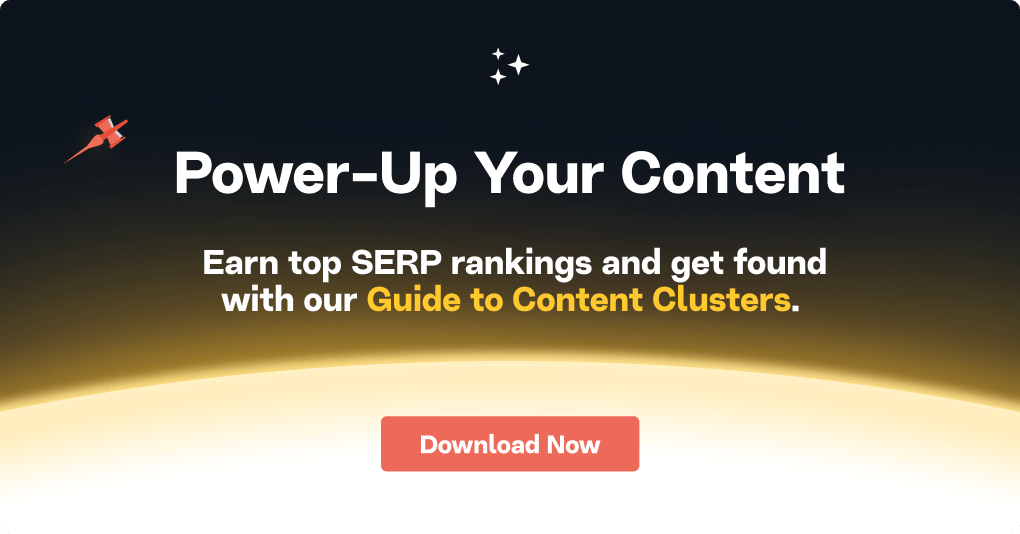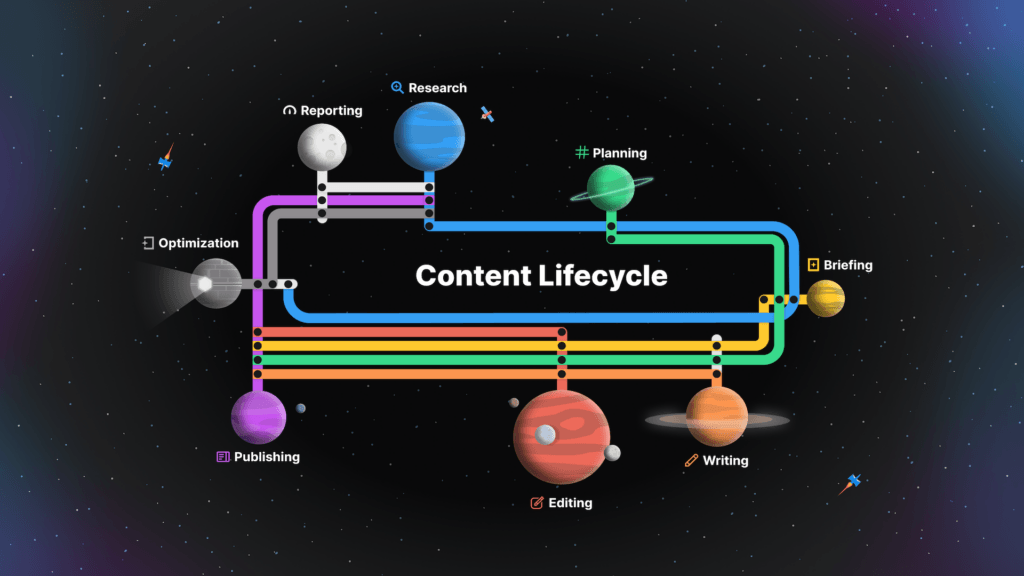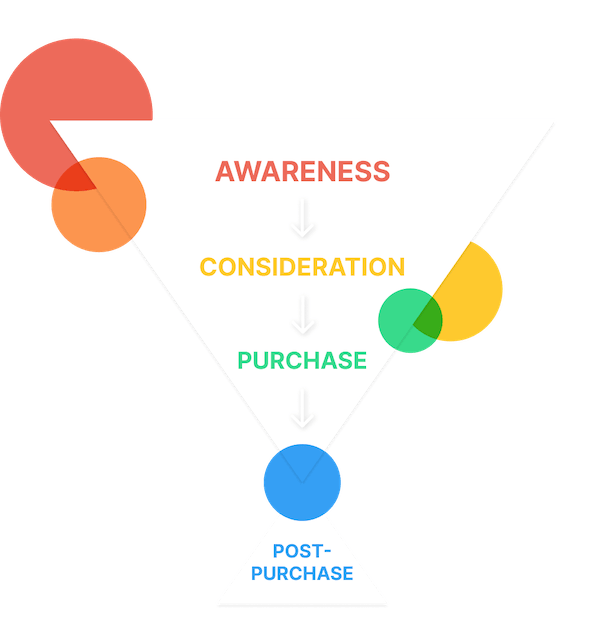What is Content Strategy? (With Examples)
A content strategy is a strategic approach to creating, managing, and distributing content. It involves planning and executing a roadmap for content creation, distribution, and optimization. A content strategy provides a framework to create valuable and purposeful content by focusing on the needs of the audience.
If you’re reading this, you likely are involved with content creation. The purpose of this article is to round out your knowledge of a content strategy through examples, so that you can take a more strategic role within your organization.
A content strategy may fall under the purview of marketing (namely, content marketing) or it may be elevated to a wide-spanning corporate role. While the approaches to content and content strategy will differ for B2C marketers and B2B marketers, a baseline understanding of what we mean when we talk about content strategy is industry-agnostic.
What is Content?
Before we dive into content strategy, it’s worth noting that the meaning of content is elusive.
Content is anything to do with awareness and education and might take the form of technical white papers, in-depth blog posts, TikTok videos, infographics, even newsletters.
What about the writing on a landing page: is that content — or copywriting? Some say, since its aim is to convert, landing pages aren’t content. The great news is, when you create your strategy, you can decide if conversion pages, emails, documentation, or community notes are content — or something else.
“Content” is a single word loaded with different connotations and meanings that depend on its context.
In the realm of content marketing, content encompasses four core elements:
- Information – What are the actual contents of your message? It can be factual, practical, entertaining, or some combination.
- Context – What is the content supposed to help you and the reader accomplish? Who is the target audience for this content? Why is it being published?
- Medium – What channel are you publishing the content on, and how does that influence the overall message?
Format – Is the content text, graphic, audio, video, interactive, virtual/augmented reality, etc.?

Content is information that is relevant in a given context and has a form shaped by the medium through which it’s transmitted.
Many definitions of content focus too much on the information and not on the rest of the elements. Information without context is just noise. Information that isn’t presented with the form and medium in mind risks being lost on the recipient. For example, you could write out the steps of changing a tire, but including images would make it a lot clearer.
Likewise, the material you include in a piece of content has to reflect the medium and form – you wouldn’t publish an in-depth guide to a complex topic in a Twitter thread. It also has to make sense in the context of the target audience you want to reach. For example, at MarketMuse, we want to reach content teams, SEO teams, and digital marketers.
Even though social media memes are content, we don’t address social media marketing because it doesn’t align with the use of our product. Anything we post on that topic would quickly lose relevance for our audience, even if it is sound. Any definition of “quality content” has to take this into account.
According to a report by 6sense for the Association of National Advertisers, 84% of people opt to self-educate before contacting sales. Content is vital in providing that education. Optimized correctly, great content can pull in potential customers without relying on traditional “push” digital marketing techniques. And of course, you can’t have paid campaigns without having an arsenal of well-crafted content. So paid or organic, digital content allows potential customers to discover and engage with you.
Effective content pulls people through the sales funnel as it helps people learn something new, solve their problems, do better work, and ultimately find the solutions they need. But to propel prospects forward, you need to be showing expertise and awareness by addressing all the questions your target audience might have. And that all is a mighty big challenge for a lot of content teams. Who in the organization can fortify you with that knowledge and expertise?
What is Content Strategy?
As noted, a content strategy is an organization-wide approach to content creation. It shouldn’t live in isolation, buried in marketing. It’s dictated by organizational goals, objectives, and resources. The right content for the wrong purpose won’t drive consistent results. Further, a strategy should incorporate a service level agreement (SLA) across departments. To succeed, you need to have buy-in from different groups and subject matter experts across the organization.
Every other facet of a content strategy – your content audit, ideation, content governance, a content plan, content production, editorial calendar, etc. – starts once you have a clear idea of how content will solve your business objectives. Sample business goals might be to
- Increase Brand Awareness
- Lower the cost of customer acquisition
- Reduce Customer Churn
- Increase velocity through the sales funnel
- Reduce questions for your support team
- Reduce friction with peripheral members of buying group (SaaS providers might need something that addresses security concerns)
Content strategy is the ongoing process of translating business objectives and goals into a plan that uses content as a primary means of achieving those goals.
Once you’ve established your core objectives, the “how” of your content strategy is honed by asking simple, yet vital questions.
- What do you want your content to accomplish in pursuit of business goals?
- How will content be measured? Remember, content is not a coupon — so it is unlikely someone will read a blog post and say, yes, I want to buy! Again, this should be an agreement as to what constitutes success.
- What content type is best suited to produce? Maybe your content team can put together great blog content but lacks the skills to create high-quality videos. If so, you know where you’ll be more likely to stand out.
- Do certain target audiences require a content type? (B2B often has 8-12 people in the buying group – all of them need content).
- What does a content audit of your site say about the existing content you have and your gaps?
- How will you source content ideas? How will we ensure they align with your brand voice, goals, and audiences?
- How will you ensure you have a documented strategy and governance, rather than relying on ad hoc requests for content?
- How will you distribute content? How can you ensure your email, influencer outreach, and social media content strategy supports your overall content marketing effort?
Any content marketing strategy must align with your broader brand strategy, marketing goals, and business objectives. For that, you’ll want to develop a roadmap.
If your content strategy doesn’t start with a business objective, it’s not a content strategy. It’s just content.
Content Strategy Deliverables
Since your content strategy is a blueprint for execution that can be handed to content creators, you will want to include information that addresses the following. Use as much detail as necessary to ensure the creation of good quality content. Some of these content strategy deliverables include:
- Brand Voice
- Product Messaging
- Persona (Audience)
- Competitive Analysis
- Ideation Process
- Content Cadence / Content Calendar
- Content Distribution /(Content Promotion Plan)
- Benchmarks – Goals
- Styleguide
- Operations Process
- Recommended Content Types (based on performance metrics)
- Subject Matter Experts (SMEs) and Influencers
- Keyword Research
Your deliverables may become more granular as you develop strategies to address different business goals.
What Do Content Strategists Do?
Content strategists are the masterminds behind an organization’s content creation, ensuring it’s useful, usable, and aligns with business goals. They plan, oversee, and optimize the entire content lifecycle, from crafting content that resonates with the target audience to choosing the best channels for distribution.
Why is Content Strategy Important?
Content strategy is important because it ensures that content is created to support business goals. As stated, a content strategy shouldn’t be created in a vacuum. By creating one, you effectively have an understanding across your company on what you’ll create and projected outcomes. This helps keep you and all the stakeholders focused.
The fact is that the content lifecycle needs to start somewhere. Here’s what that looks like.

This image represents the cycle of content strategy and execution.
Strategy leads to execution – or the beginning of the content lifecycle. Create your editorial calendar based on seasonality, product releases, and campaigns. After an audit, create your SEO topic clusters, and decide if you need net-new or to refresh existing content. Take out the guesswork by having a documented governance and operations process – from ideation through editorial review to content production. Encourage executives to have SLAs with SMEs that might exist throughout the company.
By knowing what your end goals are, you can work backward in the process to figure out where to prioritize. As you make your way through the content lifecycle, you’ll learn what content types resonate with your audience best.
Feedback from customers, prospects, partners, and the public about your content that can help you refine your overall strategy.
Remember, this is not something you deliberate on once a year or once a quarter. You’re constantly collecting learnings, adapting, and finding new ways to move through the content lifecycle a little smarter than the last time.
But again, it all starts with knowing what your strategy is. There’s no other way to measure your content marketing ROI.
Following are examples of business outcome-driven content strategies.
Content Strategy for SEO
Content strategy and SEO often work hand-in-hand, and rightfully so. Most of the businesses we work with at MarketMuse are looking to increase organic traffic and leads generated via content while lowering their Customer Acquisition Costs.
So how can a content strategy serve this goal?
As search engines like Google and Bing evolve, they put increased emphasis on serving audiences quality content that satisfies their search intention. Of course, technical issues, well-formatted HTML, back links, and site performance all play a role. But the onus is creating comprehensive, credible, high-quality content.
This is how small domains can punch above their weight with authoritative content clusters that rank highly for competitive terms.
A content cluster, or topic cluster, is a way of organizing content on a website into topically related ‘clusters.’
The first step is to identify and produce an authoritative page, the pillar page, on a core topic. You also need to create multiple content pages (cluster pages) related to that topic. The pillar page should link to the cluster pages and vice versa. A content cluster should cover a topic across all phases of the buyer’s/user’s journey — by persona.
As the diagram below shows, it starts at the top, driving awareness of your business through content that targets audiences doing keyword search who want answers to questions or to solve problems.

As they begin to identify your product/service as a possible solution, they will want content that educates and answers questions to help them decide whether or not to purchase.
Remember, some people will enter your funnel already solution-aware and just want to know more about your solution. Others may not have the slightest clue they need a solution at all and are searching for answers to a problem or question they have. A successful content strategy for SEO accounts for the buyer’s journey and includes content for searchers in all of these phases.

One example of a successful content clustering strategy is from ISSA, a provider of personal trainer, nutritionist, and fitness instructor certifications.
For its personal training certification track, ISSA produces content that anticipates possible questions and search intents its target audience might have about certification. Here’s a small sampling on how its content marketing team has covered the topic.
With a robust internal linking strategy to go along with all of this content, ISSA makes it easy for users to get the information they need and take a clear next step. Their SEO gains and organic traffic growth has been steady and continues to climb even in a highly competitive space.
Content Strategy for Customer Success and Support
If your business goal is to reduce customer churn, reduce customer calls, increase customer satisfaction and/or increase customer retention, then don’t ignore content creation for the “Post-Purchase” phase.
Content isn’t just for SEO and attracting prospects; Post-purchase content is one of the best ways to solve the business issue of too many inbound customer support requests. A customer support strategy can measure success along the lines of reducing support tickets and, ultimately, retention.
A robust library of self-serve support content, once built out, can reduce the need to hire additional headcount for those purposes. It also allows your support teams to focus their attention on high-value clients and more significant issues that content alone can’t solve.
Content can be an effective tool to educate, train, and teach customers.
aircall
Aircall.io is a customer communication and engagement platform and successfully uses content to support and retain customers. In addition to a blog with useful VoIP, sales, and customer success tactics and tips, Aircall has a robust Knowledge Base that customers can use to search for answers to specific questions about the software and phone systems.

If you find that your support teams are inundated with the same issues and questions regularly, make some room in your content calendar to produce content that helps your customers learn how to use your product themselves.
Content Strategy for Sales Enablement
Sales enablement content is content that a sales team can use to educate prospects and help them build a case for purchasing your product or service. The prime business goal is to increase pipeline velocity and close deals.
Your content strategy should consider common questions and objections your salespeople hear.
For example, one of the most common questions our sales team at MarketMuse gets from prospects is how they can use MarketMuse with their existing marketing technology stack. That’s why we produced content like this:
- How to Get the Most out of Ahrefs With MarketMuse
- How to Get the Most out of SEMRush With MarketMuse
Our sales team can send these marketing materials to prospects who want to understand how to make sure MarketMuse fits into processes built with other tools. This content can be shared beyond the buying team, so other budget makers can understand the impact.
Building a Content Strategy
Now that you understand what content strategy is and what it needs to accomplish, you’re probably wondering how to put it into practice.
This is where a content strategist can help.
If you’re starting from scratch, the best place to start learning how to build a solid content strategy is our Content Strategy Crash Course.
Once you’ve got a strong foundation, a great next step is to watch some of our content strategy, SEO, and AI-focused webinars to get some tactical tips.
Anyone can join our community and start asking and answering questions. So if you have something specific you want to discuss, that’s the place to do it!
What you should do now
When you’re ready… here are 3 ways we can help you publish better content, faster:
- Book time with MarketMuse Schedule a live demo with one of our strategists to see how MarketMuse can help your team reach their content goals.
- If you’d like to learn how to create better content faster, visit our blog. It’s full of resources to help scale content.
- If you know another marketer who’d enjoy reading this page, share it with them via email, LinkedIn, Twitter, or Facebook.







